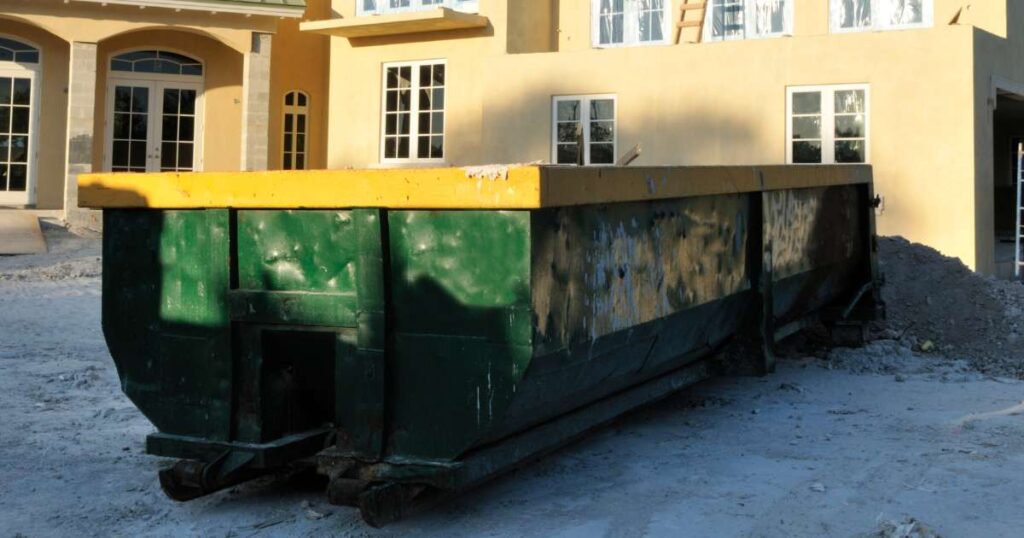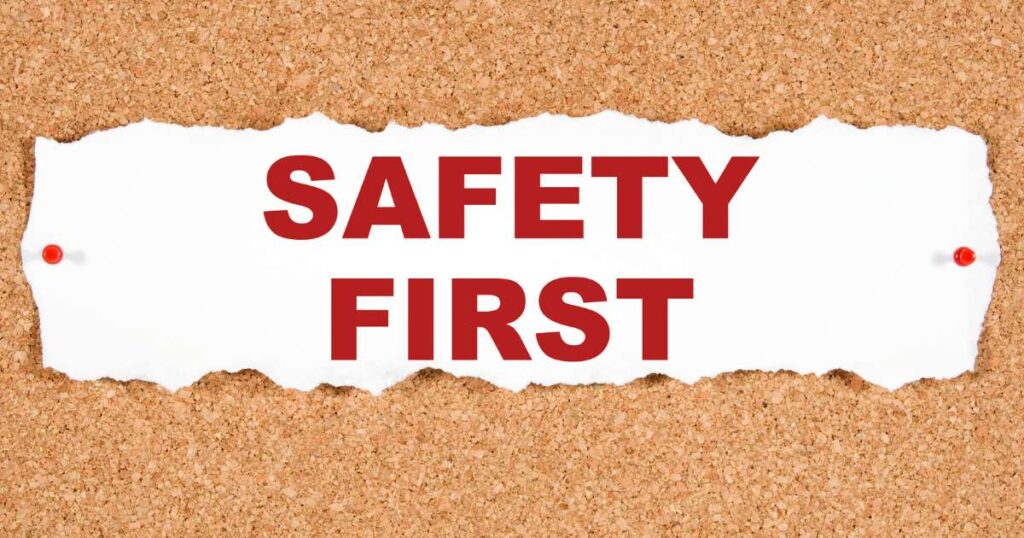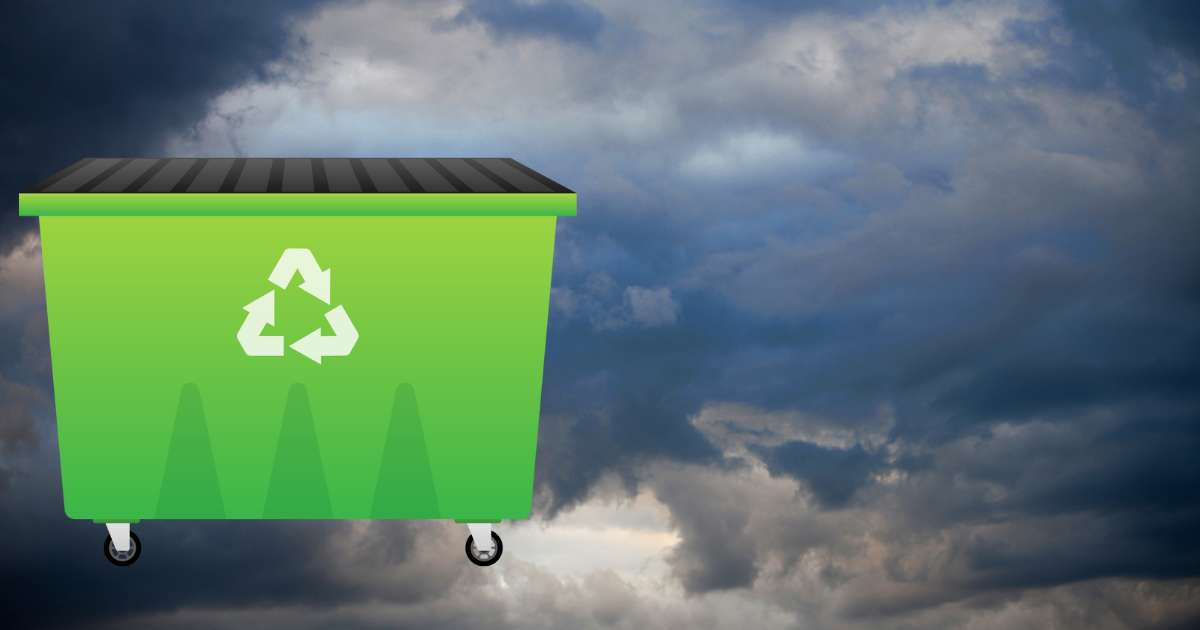Dumpster rentals are essential for various projects, from construction to home renovations, and are particularly useful for managing waste efficiently. However, bad weather conditions can pose significant challenges in utilizing a dumpster effectively.
To ensure a smooth and hassle-free experience during adverse weather, it is crucial to take proactive measures. Here are some tips to manage dumpster rentals during bad weather conditions effectively:
Choose the Right Location
The placement of the dumpster is a critical factor in minimizing the impact of bad weather.
Avoid low-lying areas: Avoid positioning the dumpster in areas prone to flooding or pooling water during heavy rains, as these conditions can cause waterlogging or structural damage to the dumpster. Also, consider standard commercial dumpster dimensions in Arlington to select the right size for your project.
Select a stable surface: Place the dumpster on a flat, sturdy surface such as concrete or compacted gravel to prevent tipping or sinking during strong winds or heavy rains.
Keep a safe distance: Ensure the dumpster is positioned away from power lines, trees, or structures that could collapse or cause debris to fall into the dumpster during storms. Additionally, maintain adequate space around the dumpster for accessibility during pickups or drop-offs.
Secure the Dumpster Lid
Many dumpsters come with lids, which are essential during bad weather.
Close the lid tightly: A securely closed lid prevents rainwater, snow, or debris from entering the dumpster, reducing the risk of soggy or heavy waste that complicates disposal.
Use straps or bungee cords: In windy conditions, use sturdy straps or bungee cords to secure the lid, ensuring it stays shut during storms or high winds.
Request a covered dumpster: If a lid isn’t available, consider requesting a rental model with built-in coverage to safeguard waste materials against weather exposure.

Cover the Dumpster
If the dumpster does not have a lid, covering it is imperative to protect its contents.
Use waterproof tarps: Secure them tightly over the dumpster with ropes, elastic straps, or heavy-duty clamps to keep out rainwater or snow.
Inspect regularly: During prolonged bad weather, periodically check that the tarp remains in place, and adjust it if necessary to prevent it from blowing away or becoming waterlogged.
Schedule Rentals Smartly
Planning is key to avoiding unnecessary disruptions caused by adverse weather conditions.
Monitor weather forecasts: Keep an eye on local weather updates and plan the delivery and pickup of the dumpster around expected bad weather to avoid complications or delays. For ongoing projects, consider scheduling regular dumpster pickups and replacements.
Opt for short-term rentals: During storm seasons or periods of unpredictable weather, short-term rentals can minimize exposure to severe conditions and the need for extensive protective measures.
Minimize Waste Exposure
Rain and snow can turn the contents of a dumpster into a soggy, heavy mess, complicating disposal and potentially increasing costs.
Use proper waste bags: Seal smaller waste items in durable, waterproof bags before placing them in the dumpster to prevent water absorption and contamination.
Organize waste: Arrange heavier materials at the bottom to provide stability and prevent lighter items from becoming airborne during windy conditions.
Separate liquid-sensitive materials: Keep cardboard, paper, and other water-sensitive materials in sealed bags or containers to reduce potential damage or mess.
Secure Surroundings
Loose debris and objects near the dumpster can cause additional problems during bad weather.
Clear the area: Remove any loose materials or items from around the dumpster that could become dangerous projectiles in strong winds or heavy rainfall.
Fence off the area: Erect temporary fencing or barriers around the dumpster to contain its contents and add an extra layer of protection from external impacts caused by flying debris.
Consider Safety First
Bad weather poses safety risks for workers and anyone around the dumpster.
Limit access: Restrict access to the dumpster during storms or hazardous weather to ensure the safety of workers and bystanders.
Use proper gear: Workers should wear weather-appropriate gear, such as non-slip boots, waterproof jackets, gloves, and hard hats, to handle waste materials safely during adverse weather.
Prioritize visibility: In foggy or stormy conditions, use reflective markers, lights, or signage around the dumpster to enhance visibility and prevent accidents.

Communicate with the Rental Company
Maintaining open communication with your rental company is crucial during bad weather conditions.
Inform about potential delays: Notify the company of any weather-related issues that might affect the scheduled pickup or delivery of the dumpster to allow for alternative arrangements.
Seek advice: Rental companies often have experience dealing with bad weather scenarios and can provide helpful guidance, such as recommending the most suitable dumpster type or suggesting additional protective measures.
Request maintenance support: If the dumpster is damaged or compromised during the weather, request prompt support or replacement services from the rental company.
Be Prepared for Emergencies
Unpredictable weather can sometimes cause unforeseen issues with the dumpster or its placement.
Have contingency plans: Prepare to act quickly in emergencies, such as if the dumpster shifts, floods, or sustains damage during a severe storm.
Inspect for damage: Once the weather subsides, conduct a thorough inspection of the dumpster and its surroundings for signs of damage or potential hazards, such as structural instability or spilled contents.
Ensure proper cleanup: If waste has been displaced during bad weather, clean up the surrounding area promptly to maintain safety and compliance with local regulations.
Frequently Asked Question
Can a dumpster rental be damaged by bad weather?
Yes, dumpsters can be affected by bad weather conditions such as heavy rain, strong winds, or freezing temperatures. Properly securing the dumpster and placing it in a safe location can help minimize potential damage.
What is the best way to protect the contents of a dumpster during heavy rain?
Cover the dumpster with a waterproof tarp or secure the lid tightly to keep out rainwater. Additionally, place water-sensitive waste materials in sealed bags or containers for extra protection.
Can I reschedule a dumpster delivery or pickup due to bad weather?
Most rental companies allow rescheduling for weather-related issues. Contact your rental provider as soon as possible to discuss alternative arrangements.
How can I prevent the dumpster from moving or tipping during strong winds?
To prevent movement, place the dumpster on a stable surface and consider using sandbags or blocks to weigh it down. Ensure it is not positioned in an open area susceptible to high wind gusts.
Will a rental company provide assistance if the dumpster is damaged during bad weather?
Yes, most reputable rental companies offer support in such situations. Notify them immediately about the issue to request maintenance, repairs, or a replacement if necessary.
Is it safe to access a dumpster during a storm?
No, it is not safe to access a dumpster during a storm or hazardous weather. Wait until conditions improve to ensure safety.
What should I do if debris around the dumpster is scattered by the wind?
After the weather subsides, collect and properly dispose of any scattered debris. Maintaining a clean area around the dumpster beforehand can reduce such occurrences.
Conclusion
Managing dumpster rentals during bad weather conditions requires careful planning, constant monitoring, and proactive measures. By choosing the right location, securing the dumpster and its contents, and maintaining communication with the rental company, you can ensure a safer and more efficient waste management process, even in adverse weather.
With these steps, you’ll protect not just the dumpster but also your project timeline and budget, while minimizing risks to workers and the surrounding environment.
